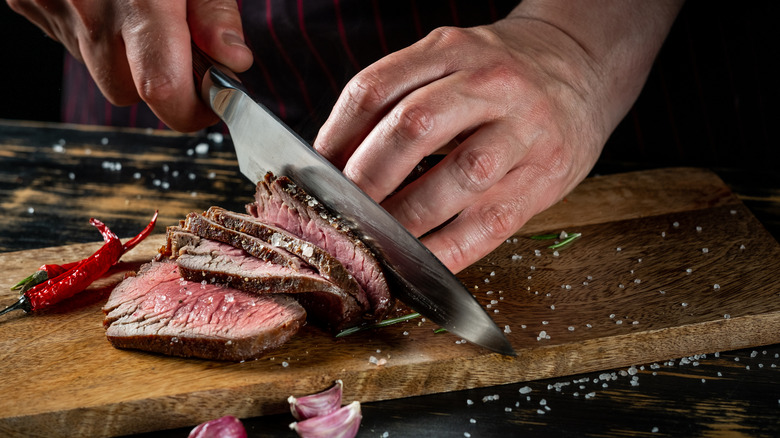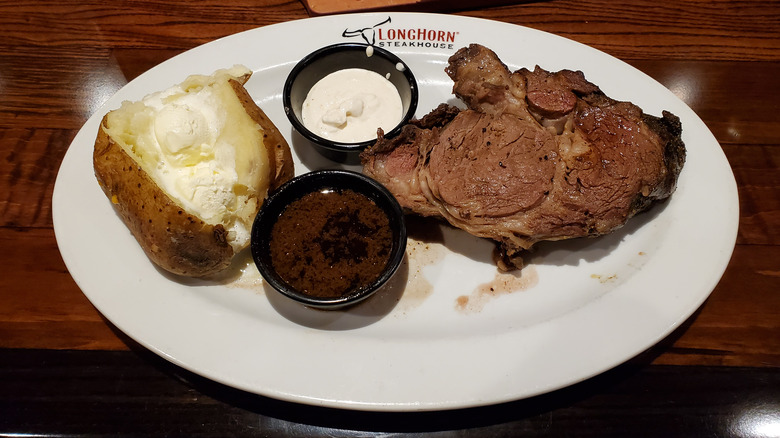A Longhorn Steakhouse Chef Has A Clever Trick For Checking Steak
Do you have a fear of cooking meat at home? If you do, you're certainly not alone. According to Lifehacker, there are many reasons people have this fear, but among the most common is the worry that they'll make their family sick. To kill contaminants, chicken should reach 150 degrees Fahrenheit, pork needs to hit 145 degrees Fahrenheit, and rare steak should reach at least 120 degrees Fahrenheit. For every additional level of steak (ex. medium-rare, medium), the temperature should rise 10 degrees Fahrenheit from the last reading.
Due to the chance of foodborne illness, consuming undercooked steak can be dangerous, per Prime-13. A bacterial infection called Salmonellosis is one of the problems that can occur; this infection can cause minor stomach problems and even spread to your bloodstream. Another sickness you've probably heard of is E.coli food poisoning, which can lead to kidney failure in extreme cases. Learning of these safety issues can be alarming for home cooks, however, a Longhorn Steakhouse chef posted a possible solution on Instagram.
Lend a hand to this method
Michael Senich, an executive chef at Longhorn Steakhouse, shared a few steak tips in a video on Instagram. First, Senich advises not to cut into the meat while it's on the grill. "All the juices will run out, and that's where all the flavor is," he says. Instead, a meat thermometer inserted into the thickest part is a better, more accurate way to measure a steak's doneness. However, if you don't own a meat thermometer, there is another method Senich recommends for temperature measuring.
In the next part of the video, the chef revealed a trick involving your hand. According to Senich, if you fully open your palm and touch the base of your thumb, the toughness is that of a rare steak. When you put down your pointer finger, the base emulates a medium-rare steak. When you put down your middle finger, the base will feel like a medium steak. This trick continues to measure medium-well and well-done cuts of meat.
Though this trick will do when a meat thermometer isn't available, a test performed by Consumer Reports proved it wasn't totally accurate. In their findings, the temperatures when using the hand method were consistently lower than the target temperature. With this discovery, it might be a good idea to buy a meat thermometer after all.

